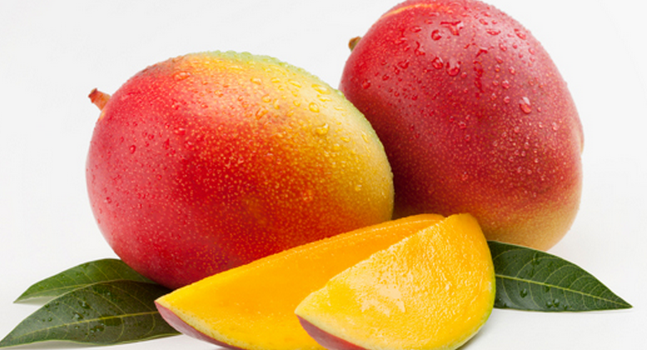- 3/4 cup quinoa, rinsed and drained—soak overnight in a 3 qt saucepan with just enough water to cover.
- 21 oz coconut milk (1 1/2 cans)
- 3/4 raw honey — (see below)
- fresh or frozen mangoes
- 1 tsp. real vanilla extract
- 1/2 cup toasted coconut flakes — (see below)
Place the coconut milk in the sauce pan with the quinoa. Bring to boil and reduce heat, cover and simmer on low heat about 25 minutes. Because I soak the quinoa overnight to help with digestion, I use less coconut milk than the original recipe, which calls for 2 cans. You want the quinoa / coconut milk mixture to be really thick. Add vanilla. Chill. Then stir in honey. Stir in about 2 cups chopped mangoes, saving some slices for decoration. Sprinkle with coconut flakes and a few pomagranate seeds for color.
To toast the coconut flakes place in a non stick frying pan and toast over a low heat….no need to add any butter or oil. Get the organic coconut with no SULFITES.
ABOUT HONEY—By Vasant Lad, Yoga+
The fossil record tells us honeybees have been around for 150 million years or more. No one knows when we discovered the treasure hidden in their hives, but paintings of beekeepers lining the walls of a cave in Spain prove that we have been practicing the art of beekeeping for at least 7,000 years. Honey is versatile. It has been prized as a sweetener, as medicine, as an offering for the gods, as currency, and as a symbol of love. In Greek mythology, for example, Cupid dips his arrows in honey before aiming them at our hearts.
According to ayurveda, honey is the nectar of life. Because it is created from the essence of a flower’s sex organs, it has a natural affinity with reproductive tissue. It can also heal sore throats, colds, coughs, ulcers, burns, and wounds. And when ingested with a healing herb (like ashwagandha), honey travels to the deepest tissues, transporting the chemical properties and the subtle energies of medicine to the cellular level.
Ayurveda says that raw honey is medicine, but cooked honey is a slow poison. Why? In its natural form, honey is rich in minerals, vitamins, enzymes, amino acids, and carbohydrates. But heat strips honey of most of its nutritional value and transforms the honey molecules into a non-homogenized glue that adheres to mucous membranes and clogs subtle energy channels. Cooked honey creates cellular toxicity and may lead to immunological dysfunction. It can also clog the arteries and lead to atherosclerosis (thickening of the arteries), hampering blood flow to the vital organs. So as a general rule, honey should never be cooked, and nothing should be cooked with honey. Instead, add raw honey to yogurt, warm tea, or spread it on bread or toast.
These days, most honey sold commercially has been heated and should be avoided. Look for the words “raw” or “unpasteurized” on honey at a health-food store or online at places like the Ayurvedic Institute (www.ayurveda.com) or www.eBeeHoney.com. But the purest form of honey is local and raw because it helps prevent (or calm) seasonal allergies and is full of prana (vital energy). Check your local farmers’ market, and if you live in the country, keep an eye out for roadside honey stands.
Read more: http://www.care2.com/greenliving/14-healing-remedies-with-honey.html#ixzz2BlUD2GiI



